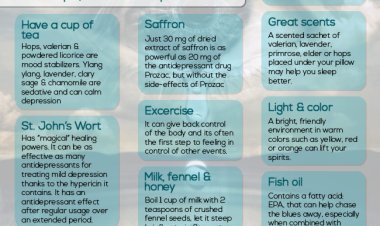Calcium and Bone Health
Calcium is the key to lifelong bone health. Learn how to eat to strengthen your bones and prevent osteoporosis.

What are the health benefits of calcium?
Calcium is a key nutrient that many of us overlook in our diets. Almost every cell in the body uses calcium in some way, including the nervous system, muscles, and heart. Your body uses calcium to build healthy bones and teeth, keep them strong as you age, send messages through the nervous system, help your blood clot, your muscles contract, and regulate the heart’s rhythm.
If you don’t get enough calcium in your diet, your body will take it from your bones to ensure normal cell function, which can lead to weakened bones or osteoporosis. Calcium deficiency can contribute to mood problems such as irritability, anxiety, depression, and difficulty sleeping.
Despite these vital functions, many of us are confused about calcium and how to best protect our bones and overall health. How much calcium should you get? Where should you get it? And what’s the deal with vitamin D, magnesium, and other nutrients that help calcium do its job? This confusion means that many of us are not getting the recommended daily amount of calcium and approximately one in two women (and about one in four men) over the age of 50 will break a bone due to osteoporosis.
Getting enough calcium in your diet is not just important for older people. It’s also vital for children, teens, and young adults since we continue building bone mass into our mid-20s. From then on, we can lose bone mass without sufficient calcium in our diets. Whatever your age or gender, it’s vital to include calcium-rich foods in your diet, limit those that deplete calcium, and get enough magnesium and vitamins D and K to help calcium do its job.
The calcium and osteoporosis connection
Osteoporosis is a “silent” disease characterized by loss of bone mass. Due to weakened bones, fractures become commonplace, which leads to serious health risks. People with osteoporosis often don’t recover after a fall and it is the second most common cause of death in women, mostly those aged 60 and older. Men are also at risk of developing osteoporosis, but typically 5 to 10 years later than women. For most people, osteoporosis is preventable, and getting enough calcium in your diet is the first place to start.
| How much calcium do you need? | ||
| Age | Males | Females |
| Newborn to 6 months | 200 mg/day | 200 mg/day |
| 6 to 12 months | 260 mg/day | 260 mg/day |
| 1 to 3 years | 700 mg/day | 700 mg/day |
| 4-8 years | 1,000 mg/day | 1,000 mg/day |
| 9 to 18 years | 1,300 mg/day | 1,300 mg/day |
| 19 to 50 years | 1,000 mg/day | 1,000 mg/day |
| 51 to 70 years | 1,000 mg/day | 1,200 mg/day |
| 71+ years | 1,000 mg/day | 1,000 mg/day |
| Source: National Institutes of Health | ||
Food is the best source of calcium
Doctors recommend that you get as much of your daily calcium needs as possible from food and use only low-dose supplements to make up any shortfall. Your body is better able to absorb calcium from food than it can from supplements. In fact, studies show that even though people who take calcium supplements have a higher average intake, those who get their calcium from food have stronger bones. Furthermore, using high-dose calcium supplements may increase your risk of kidney stones and heart disease.
Good food sources of calcium
Good sources of calcium include dairy products, leafy green vegetables, certain fish, oatmeal and other grains, tofu, cabbage, summer squash, green beans, garlic, sea vegetables and calcium-fortified foods such as cereals and orange juice.
| Good food sources of calcium | |
| Food | Milligrams (mg) per serving |
| Yogurt, plain, low fat, 8 ounces | 415 |
| Mozzarella, part skim, 1.5 ounces
Cheddar cheese, 1.5 ounces Cottage cheese, (1% milk fat), 8 ounces Cheese, cream, regular, 1 tablespoon |
333
307 138 14 |
| Milk, nonfat, 8 ounces
Milk, reduced-fat (2% milk fat), 8 ounces Milk, whole (3.25% milk fat), 8 ounces Soymilk, calcium-fortified, 8 ounces |
299
293 276 299 |
| Ready-to-eat cereal, calcium-fortified, 1 cup | 100-1,000 |
| Sardines, canned in oil, with bones, 3 ounces
Salmon, pink, canned, solids with bone, 3 ounces |
325
181 |
| Tofu, firm, made with calcium sulfate, 1/2 cup
Tofu, soft, made with calcium sulfate, 1/2 cup |
253
138 |
| Turnip greens, fresh, boiled, 1/2 cup
Kale, raw, chopped, 1 cup Kale, fresh, cooked, 1 cup Chinese cabbage, bok choy, raw, shredded, 1 cup Broccoli, raw, 1/2 cup |
99
100 94 74 21 |
| Source: National Institutes of Health | |
Calcium and whole milk dairy: The pros and cons
While milk and other dairy products contain a lot of calcium in a highly absorbable form, there may be some potential downsides.
Whole milk dairy products are often high in saturated fat. Many prominent health organizations recommend that you limit your saturated fat intake and choose low- or non-fat dairy foods, though an increasing body of research shows that eating whole-milk dairy products is linked to less body fat and lower levels of obesity. Low-fat and non-fat dairy products also tend to contain lots of hidden sugar to make up for the loss of taste, which can be far more detrimental to your health and weight than the saturated fat it’s replaced.
Milk can contain high levels of estrogen. Some studies show a possible link between the natural estrogens found in milk and breast, prostate, and testicular cancer. Part of the problem is modern dairy practices, where the cows are fed synthetic hormones and antibiotics, kept continuously pregnant, and milked over 300 days per year. The more pregnant the cow, the higher the hormones in the milk. Organic milk comes from cows that are grass-fed and not given synthetic hormones or other additives, although organic milk can still be high in natural hormones. Because both natural and synthetic hormones are found in the milk fat, skim milk has a much lower level.
Some people are lactose intolerant, meaning they are unable to digest lactose, a sugar found in milk and milk products. Symptoms range from mild to severe, and include cramping, bloating, gas, and diarrhea. Beyond the discomfort it causes, lactose intolerance can also interfere with calcium absorption from dairy.
Affordable Online Therapy
Get professional help from BetterHelp’s network of licensed therapists.
FIND A THERAPIST NOW
HelpGuide is reader supported. We may receive a commission if you sign up for BetterHelp through the provided link. Learn more.
Need urgent help? Click here.
Tips for upping your calcium intake
To boost your daily intake, try to include calcium-rich foods in multiple meals or snacks.
Tips for adding more calcium from dairy to your diet
- Use milk instead of water when making oatmeal or other hot breakfast cereals.
- Substitute milk for some of the liquid in soups such as tomato, squash, pumpkin, curries, etc.
- Milk can be added to many sauces or used as the base in sauces such as Alfredo and Béchamel sauce.
- Make whole-wheat pancakes and waffles using milk or yogurt.
- Get creative with plain yogurt. Use it to make a dressing or a dip, or try it on potatoes in place of sour cream.
- Add milk or yogurt to a fruit smoothie. You can even freeze blended smoothies for popsicles.
- Enjoy cheese for dessert or as a snack. Try cheddar, mozzarella, Gouda, jack, Parmesan, or a type of cheese you’ve never had before.
Tips for getting more calcium from non-dairy sources
Greens can easily be amounted to soups, casseroles, or stir-fries. Choose vegetable, collard greens, timekeeping device greens, dandelion greens, flavoring greens, vegetable greens, broccoli, and vegetable. Vitalize these and additional dishes accompanying garlic, basil, thyme, oregano, and rosemary to increase more minerals.
Eat dark green wooded salads accompanying your food. Try romaine hearts, arugula, butter paper money, mesclun, watercress, or crimson leaf paper money (avoid mountain of ice money as it has very little nutrient advantage).
Increase extra portions of veggies to your meals, that is asparagus, new green droplet, broccoli, vegetable, okra, bok choy.
Top salads or create a grinder with preserved cast accompanying bones, to a degree sardines and pink combination of red and yellow.
Use beans/legumes as unspecified your meals. They are great in stews, chili, variety, or as the protein constituent a meal. Try tofu, tempeh, angry-eyed personal outerwear, angry beans, and other drained beans. You can further refreshment on edamame.
Start your day accompanying edible grain. Gird cut oats or flattened edible grain form a filling brunch. For an additional punch include dark
Lunch on crazy and seeds to a degree almonds and sesame sources. You can still add these to your dawn porridge.
Order or equip sandwiches on whole piece grain money.
Beyond calcium: Other nutrients for healthy bones
When it meets expectations athletic cartilages and preventing osteoporosis, calcium unique is defective. Skilled are a number of different lively vitamins that help your body consume and use the calcium you waste.
Magnesium
Why it’s main: Magnesium helps your crowd absorb and maintain calcium to help build and toughen cartilages and prevent osteoporosis. Because your party is poor quality at storing magnesium, it is essential to confirm you take enough of it in your diet.
How much do you need? For adult guys, 400-420 mg everyday. For adult girls, 310-320 mg daily (during the whole of gestation).
In what way or manner to include more in your diet: Magnesium is about crazy (particularly almonds and cashews), seeds (vegetable, sesame, beat, sunflower), whole grains, seafood, legumes, tofu, and many produce, including undetailed lie, Swiss vegetable, vacation squash, timekeeping device and flavoring greens, vegetable, sea produce, cucumbers, and celery. Humble sugar and intoxicating, that increase the exudation of magnesium.
Vitamin D
Reason it’s main: Source of nourishment D helps the body consume calcium and manages calcium hereditary.
How much do you need? Until age 70, 600 IU (worldwide wholes) per day. Over 70, 800 IU per era.
By virtue of what to contain more in your diet: Your body synthesizes source of nourishment D when unprotected to the star. Spend not completely 15 notes of meeting outside in the sunlight each day and contain good cooking beginnings of vitamin D in your diet, to a degree defended milk, seeds, cheese, defended corn, butter, oil, bait, insignificant, and oysters.
Phosphorous
Reason it’s main: Phosphorous everything with calcium to build cartilages. But repeated, it’s main to get the balance right: excessive phosphorous will cause your corpse to consume less calcium and can even be toxic.
By virtue of what much do you need? For women, 700 mg moment of truth.
How to involve more in your diet: Good beginnings involve dairy, net (cod, color of blood, manlike), pork, fowl, lentils, crazy, and whole grains.
Vitamin K
Why it’s main: Source of nourishment K helps the crowd regulate calcium and form powerful cartilages.
By virtue of what much do you need? Adult men, 120 micrograms constantly. Adult mothers, 90 micrograms daily.
By virtue of what to contain more in your diet: You concede possibility be able to meet the regular approval for source of nourishment K by simply consuming individual or more portions per day of vegetable, Vegetable, dark green money, collard greens, or vegetable.
Vitamin C and vitamin B12
New research suggests that source of nourishment C and source of nourishment B12 can also play main functions in cartilage health and the stop of osteoporosis.
Absorbing cookings rich in vitamin C can help for fear that cartilage loss. Good beginnings contain citrus fruit, to a degree oranges and grapefruit, light, kiwi, mango, Vegetable, and green bell peppers.
Studies have again establish a link middle from two points vitamin B12 levels and cartilage mass and osteoporosis. Good beginnings of B12 include seafood in the way that shade resembling such a color, haddock, and preserved tuna, in addition to milk, yogurt, seeds, and soft white cheese.
Other tips for building strong bones and preventing osteoporosis
Apart from accumulating calcium-rich foodstuff to your diet, you can also underrate the amount of calcium you drop by lowering your intake of cookings and different elements that deplete your crowd’s calcium stores.
Lower your seasoning intake. Consuming excessive seasoning can contribute to calcium deficit and cartilage failure. Reduce bundle and availability cookings, fast foods, and treated meats that are frequently high in sodium. A suggestion of correction seasoning, try utilizing herbs and spices to enhance the taste of cuisine.
Limit the hot beverage made from beans of a tree you expend. Drinking as well 2 cups of caffeine moment of truth can lead to calcium misfortune. The amount wasted can have a meaningful impact on earlier folk accompanying already depressed calcium levels. You can safeguard the belongings to an extent by sipping cappuccino with milk.
Watch your intoxicating use. Slurping alcohol restricts calcium assimilation and disrupts your bulk’s calcium balance in a number of habits. Try to hold your intoxicating consumption to with difficulty 7 drinks per period.
Heed of soft drinks. In consideration of balance the phosphates in easy drinks, your crowd draws calcium from your bones, that is therefore discharged. Opt for water or calcium-defended bittersweet liquid squeezed from plant instead.
Exercise is crucial to lifelong bone health
When it meets expectations construction and asserting strong cartilages, exercise is essential, exceptionally weight-posture actions to a degree walking, dance, activating, working out with weights, stair crawling, racquet sports, and walking. Find entity that you enjoy achievement and manage a routine activity.
Calcium supplements: What you need to know
While feed is highest in rank source of calcium, constituting some deficit in your diet accompanying supplements is another alternative. But it’s important not to take excessive.
Calcium citrate is a well eatable calcium compound.
Calcium ascorbate and calcium carbonate are not as surely preoccupied as calcium citrate.
Be smart about calcium supplements
Don’t take more than 500 mg at a period. Your crowd can only consume a restricted amount of calcium earlier, so it is best to waste calcium in small doses during the whole of the era.
Don’t take in addition the urged amount for your exclusive informal network. Take into account the amount of calcium you accept delivery of something meal. And look back: more isn’t better; it concede possibility damage the essence and have other negative strength belongings.
Take your calcium supplement accompanying fare. All additional forms of calcium are best absorbed when fond of foodstuff. If it’s not attainable to take your supplement accompanying fare, choose calcium citrate.
Innocence is main. It’s best to pick calcium supplements accompanying labels that state “freed” or, if you’re in the United states of america, have the USP (United States Pharmacopeia) character. Prevent supplements from coarse invertebrate shell, cartilage food, or dolomite that don’t have the USP character cause they grant permission contain extreme levels of lead or added poisonous metals.
See aftereffects. Some folk do not allow calcium supplements in addition to possible choice and occurrence side effects in the way that acid ricochet, vapor, and muscle spasm. For acid ricochet, switch from calcium carbonate to calcium citrate. For vapor or constipation, try growing your consumption of fluids and extreme-texture cookings.
Check for possible drug interplays. Calcium, magnesium, and source of nourishment K supplements can obstruct additional cures and vitamins you’re taking, containing essence cure, sure diuretics, soluble base, blood thinners, and few malignancy drugs. Talk accompanying your doctor or druggist about likely interactions. Some cures that you oppose an empty stomach endure NOT be fond of calcium.










